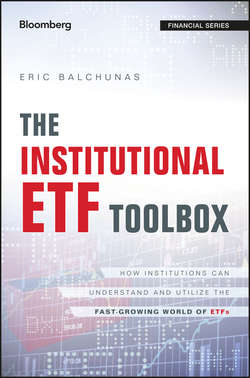Читать книгу The Institutional ETF Toolbox - Balchunas Eric - Страница 16
SECTION I
The ETF Phenomenon
CHAPTER 1
Why Are ETFs So Popular?
Democratic
ОглавлениеETFs are democratic in two ways. First, they have democratized investing by providing retail access to many asset classes, countries, and strategies.
ETFs have also democratized things by providing this access at the same cost. For the first time ever in the history of investing, big institutional investors and small retail investors are using the same investment products and paying the same expense ratios. Unlike mutual funds and SMAs, which have a fee system equivalent to a regressive tax – the less money you can invest, the more you get charged – ETFs are like a flat tax. So my Aunt Joyce investing $1,000 in an ETF gets charged the same annual expense ratio as would Yale University’s endowment or a hedge fund investing $100 million.
In this way, you could argue that ETFs are like the Sam’s Club of funds. Just as Sam’s Club offers wholesale prices on everything, similarly ETFs are priced about the same as the institutional class of a mutual fund. This fairness provides a philosophical undercurrent that is totally in tune with the times and something that has made them a big hit with millennials who generally like fairness and transparency while distrusting anything Wall Street.
While democratization is heartwarming and great for the little guy, how does this benefit institutions? The benefit to institutions is simple: more liquidity. That’s ultimately their favorite thing about ETFs. With retail and advisors using ETFs alongside institutions, they both benefit the increase in liquidity because it brings the bid/ask spread down and makes it cheaper to trade. This advantage is unique to ETFs relative to SMAs and mutual funds – the more users of the ETF, the better the user experience, be it a retail of institutional one.
